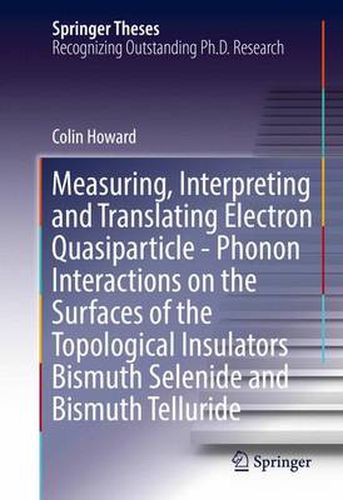Readings Newsletter
Become a Readings Member to make your shopping experience even easier.
Sign in or sign up for free!
You’re not far away from qualifying for FREE standard shipping within Australia
You’ve qualified for FREE standard shipping within Australia
The cart is loading…






This title is printed to order. This book may have been self-published. If so, we cannot guarantee the quality of the content. In the main most books will have gone through the editing process however some may not. We therefore suggest that you be aware of this before ordering this book. If in doubt check either the author or publisher’s details as we are unable to accept any returns unless they are faulty. Please contact us if you have any questions.
The thesis presents experimental and theoretical results about the surface dynamics and the surface Dirac fermion (DF) spectral function of the strong topological insulators Bi2Te3 and Bi2Se3. The experimental results reveal the presence of a strong Kohn anomaly in the measured surface phonon dispersion of a low-lying optical mode, and the absence of surface Rayleigh acoustic phonons. Fitting the experimental data to theoretical models employing phonon Matsubara functions allowed the extraction of the matrix elements of the coupling Hamiltonian and the modifications to the surface phonon propagator that are encoded in the phonon self-energy. This allowed, for the first time, calculation of phonon mode-specific DF coupling
(q) from experimental data, with average coupling significantly higher than typical values for metals, underscoring the strong coupling between optical surface phonons and surface DFs in topological insulators. Finally, to connect to experimental results obtained from photoemission spectroscopies, an electronic (DF) Matsubara function was constructed using the determined electron-phonon matrix elements and the optical phonon dispersion. This allowed calculation of the DF spectral function and density of states, allowing for comparison with photoemission and scanning tunneling spectroscopies. The results set the necessary energy resolution and extraction methodology for calculating
from the DF perspective.
$9.00 standard shipping within Australia
FREE standard shipping within Australia for orders over $100.00
Express & International shipping calculated at checkout
This title is printed to order. This book may have been self-published. If so, we cannot guarantee the quality of the content. In the main most books will have gone through the editing process however some may not. We therefore suggest that you be aware of this before ordering this book. If in doubt check either the author or publisher’s details as we are unable to accept any returns unless they are faulty. Please contact us if you have any questions.
The thesis presents experimental and theoretical results about the surface dynamics and the surface Dirac fermion (DF) spectral function of the strong topological insulators Bi2Te3 and Bi2Se3. The experimental results reveal the presence of a strong Kohn anomaly in the measured surface phonon dispersion of a low-lying optical mode, and the absence of surface Rayleigh acoustic phonons. Fitting the experimental data to theoretical models employing phonon Matsubara functions allowed the extraction of the matrix elements of the coupling Hamiltonian and the modifications to the surface phonon propagator that are encoded in the phonon self-energy. This allowed, for the first time, calculation of phonon mode-specific DF coupling
(q) from experimental data, with average coupling significantly higher than typical values for metals, underscoring the strong coupling between optical surface phonons and surface DFs in topological insulators. Finally, to connect to experimental results obtained from photoemission spectroscopies, an electronic (DF) Matsubara function was constructed using the determined electron-phonon matrix elements and the optical phonon dispersion. This allowed calculation of the DF spectral function and density of states, allowing for comparison with photoemission and scanning tunneling spectroscopies. The results set the necessary energy resolution and extraction methodology for calculating
from the DF perspective.